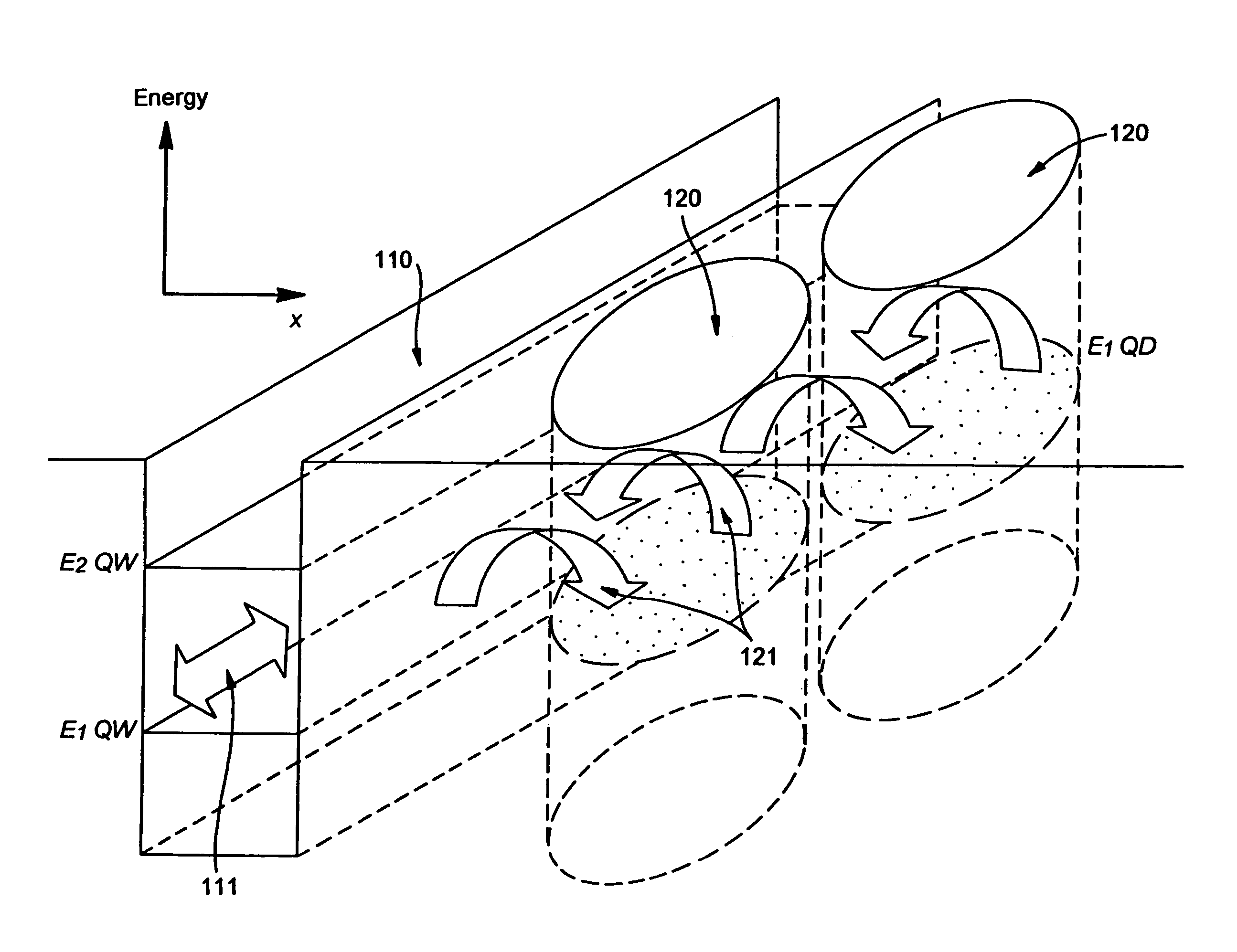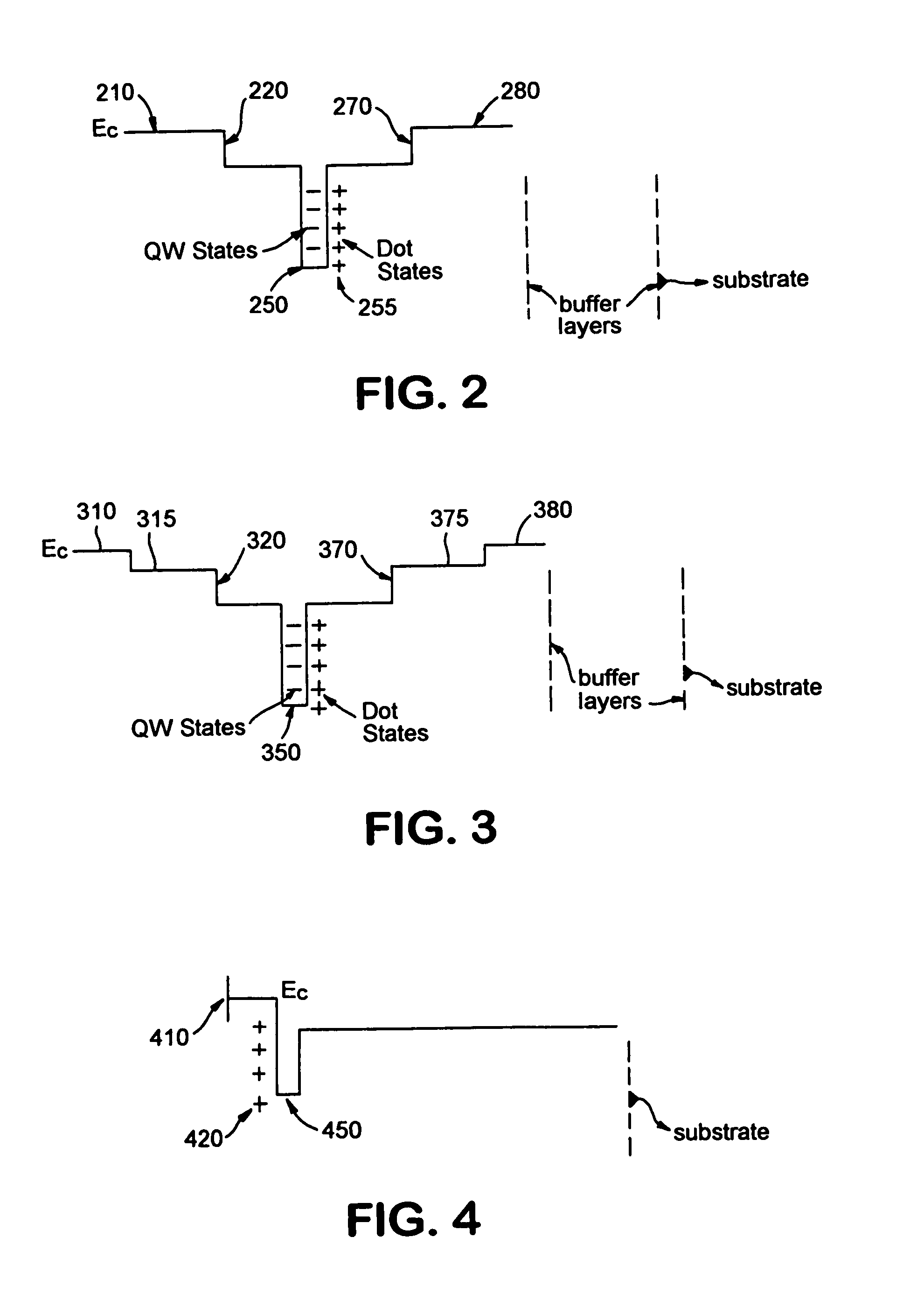Device with quantum dot layer spaced from delta doped layer
- Summary
- Abstract
- Description
- Claims
- Application Information
AI Technical Summary
Benefits of technology
Problems solved by technology
Method used
Image
Examples
Embodiment Construction
[0034]FIG. 1 is a diagram illustrating intra-QW carrier transport, and inter-QD-QW transport (in both directions) by tunnelling of carriers in a device with a quantum dot layer disposed in close proximity to a quantum well layer. In FIG. 1, the vertical direction represents energy level, and the x direction is normal to the plane of the device layers. The quantum well communication layer is represented at 110, and quantum dots are represented at 120. Quantum well energy states are labelled at E1QW and E2QW, and quantum dot energy state is labelled at E1QD. Double-headed arrow III represents intra QW transport, and the arrows 121 represent inter QW-QD transport in both directions. As seen from the diagram, an electron can, for example, tunnel from quantum dot to the quantum well layer, transports in the quantum well layer, and re-tunnels back into another quantum dot. In this manner, it is possible for the charge to get unstuck from a quantum dot and move from dot to dot in the waveg...
PUM
 Login to View More
Login to View More Abstract
Description
Claims
Application Information
 Login to View More
Login to View More - R&D
- Intellectual Property
- Life Sciences
- Materials
- Tech Scout
- Unparalleled Data Quality
- Higher Quality Content
- 60% Fewer Hallucinations
Browse by: Latest US Patents, China's latest patents, Technical Efficacy Thesaurus, Application Domain, Technology Topic, Popular Technical Reports.
© 2025 PatSnap. All rights reserved.Legal|Privacy policy|Modern Slavery Act Transparency Statement|Sitemap|About US| Contact US: help@patsnap.com



